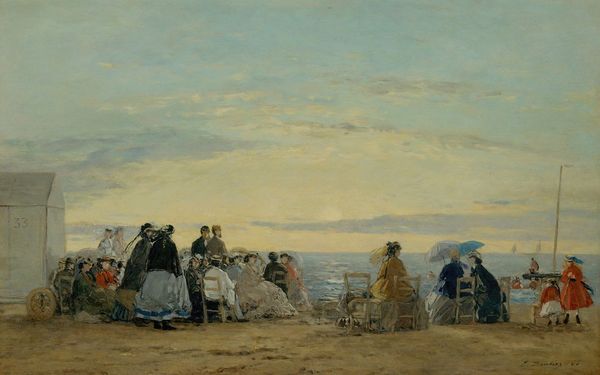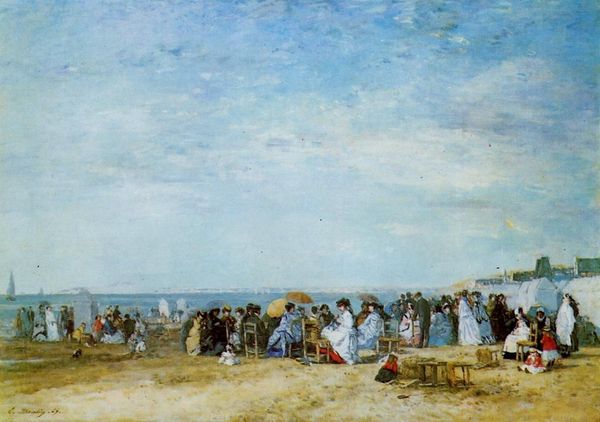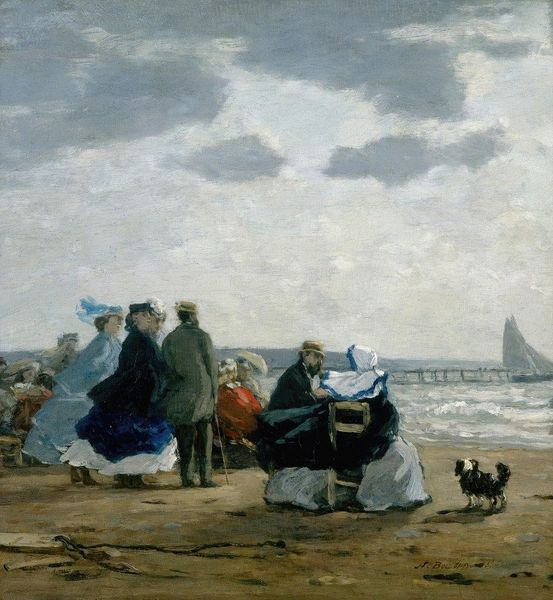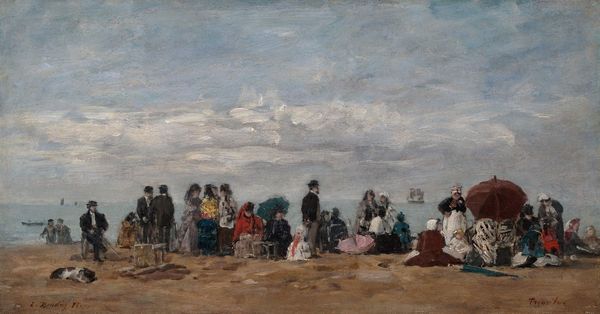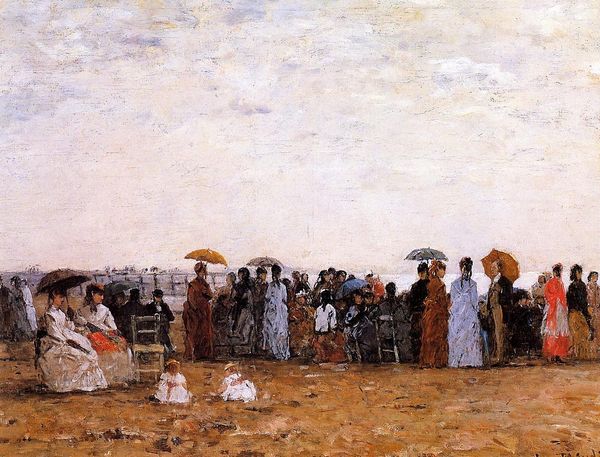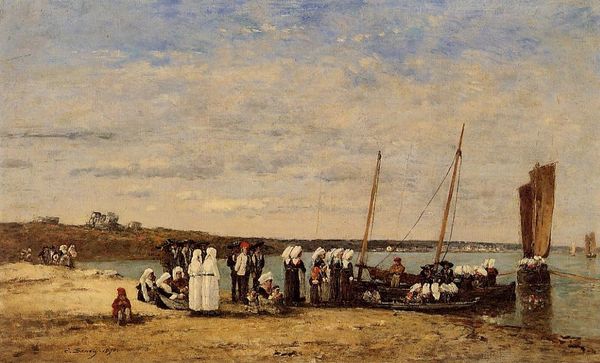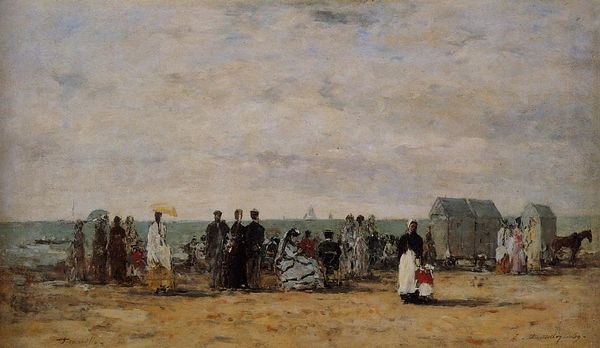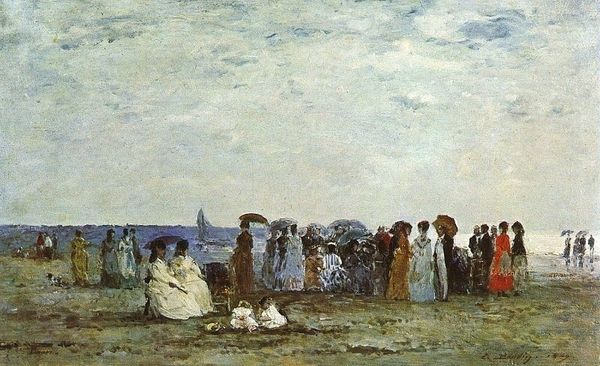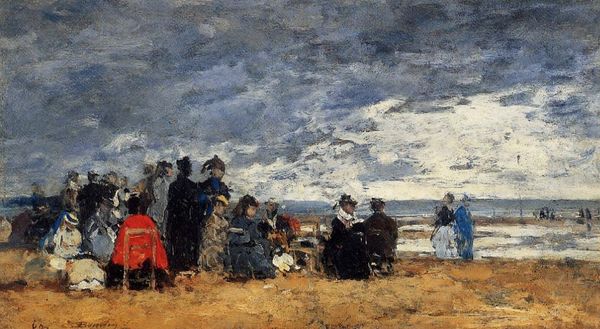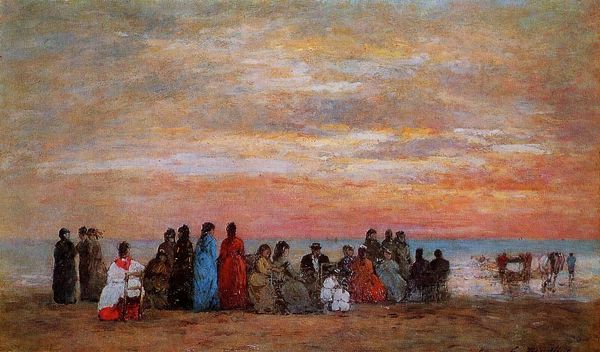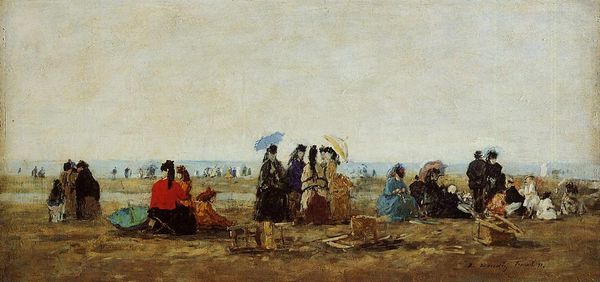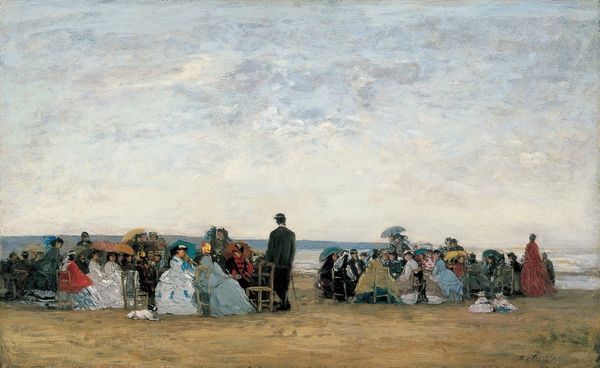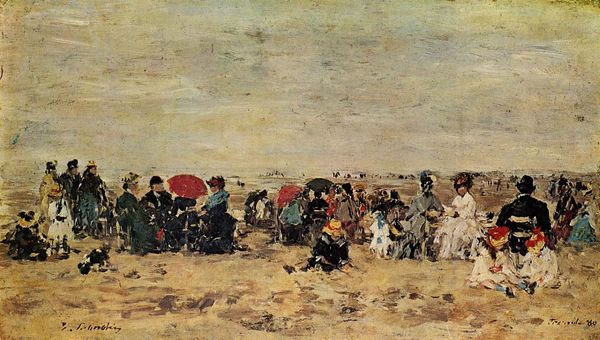
plein-air, oil-paint
#
impressionism
#
plein-air
#
oil-paint
#
landscape
#
impressionist landscape
#
oil painting
#
water
#
cityscape
#
genre-painting
Dimensions: 22.5 x 36.5 cm
Copyright: Public domain
Editor: This is Eugène Boudin's "The Beach at Trouville," painted in 1869. It's an oil painting and, because it's labeled "plein-air," was likely made outdoors, which is really interesting! The scene depicts figures gathered on a beach, but it almost feels like the figures are less important than the textures of the sand and the sky. What do you see in this piece? Curator: The materiality of "The Beach at Trouville" speaks volumes. Look at the visible brushstrokes – they aren't just depicting form, they *are* the form. Boudin uses the oil paint almost sculpturally, reflecting a changing mode of artistic labor. It moves from a hidden, academic process toward one that emphasizes its own construction and making of art, performed in the open. Editor: So you're saying the process *is* the point? It's interesting, I almost wonder if the rising middle class being able to visit the beach influenced Boudin to paint this *en plein air.* Curator: Precisely. Think about the social context. Coastal leisure became increasingly accessible. Boudin’s light, transportable materials - small canvases and readily available oil paints - mirror and serve that newfound mobility. But this is a construction of leisure, carefully posed on the beach. Can you imagine the constraints faced by women present with such heavy clothing? The artist mediates that constraint with color. Note how the sky mirrors in the sand and is echoed in each costume; is there an inherent symbolism here, or only social implications? Editor: That makes me think about the consumption habits too; the subjects are essentially advertising leisurely beach trips through their presence in the paintings! Curator: Yes, and this is where it's essential to push back on traditional hierarchies of art. Consider how painting *en plein air* blurs boundaries; the act of "high art" moves toward the realm of craft and commerce. It opens many questions regarding the commodification of leisure, the changing role of the artist, and how material choices underscore that shift. Editor: I never considered the role of artistic materials reflecting that societal shift, but that completely changes my perspective! Curator: Indeed, focusing on these elements unveils more intricate ways to view even seemingly simple pieces.
Comments
No comments
Be the first to comment and join the conversation on the ultimate creative platform.
